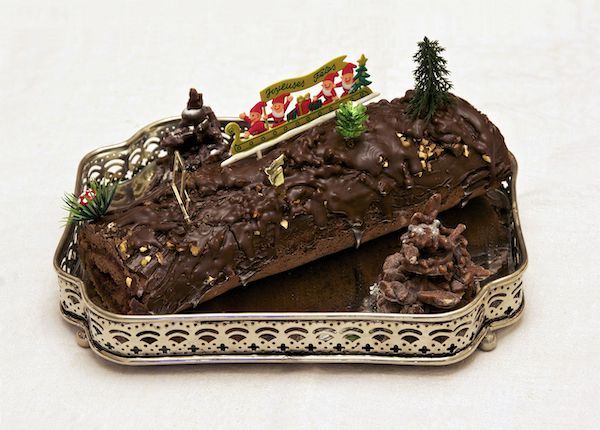Christmas is a winter holiday based on a human event — the birth of Jesus — and thus is celebrated only by people who are a part of the Christian religion. The winter solstice, on the other hand, is an event based on a nearly universal experience of humankind, with the exception of those living close enough to the equator that the shifting of daylight hours makes little difference. This allows anyone to celebrate the return of the daylight hours without reference to any specific religion or belief system. For those of us who follow the holidays marked out on the Wiccan Wheel of the Year, Yule is the natural counterpoint to the Summer Solstice, called Litha. On the shortest day, we shed the previous six months and pause before we look forward into the next. It is a liminal space, and in it we celebrate the privilege of being with family either chosen or given, the communion rituals of eating a rich meal, and warming ourselves by a fire. In the days leading up to Yule, we clean our houses and reset our intentions for the rest of the winter. If you have been following this loosely collected series of posts about the Wheel of the Year celebrations, it won’t surprise you that my first recommendation for a guide to this holiday is from Llewellyn’s Sabbat Essentials: Yule. The series leans heavily Wiccan, which is not a path I follow, but the texts also have a lot of historical context along with recommendations for rituals and, always important to any celebration, recipes for delicious food. Speaking of food, one of my favorite Yuletide foods that is also a Christmas food is the Bûche de Noël: a thin sponge cake with layers of buttercream icing or jam, rolled into a Yule log. It is covered with chocolate “bark” and surrounded by meringue “mushrooms,” and is just as decadent and delicious as it sounds. This recipe from Williams-Sonoma is also available in their Favorite Cakes cookbook. Because we are all book lovers, my coven has incorporated the Icelandic celebration Jolabokaflod, or “Christmas Book Flood,” into our Yule tradition. Jolabokaflod began during World War II, when one of the only commodities not rationed in Iceland was paper. Giving books has become a Christmas tradition, and the purchases of books specifically for the holiday is responsible for a large percentage of Iceland’s book sales for the whole year. By adopting this tradition, we gain shared talking points and continue one of the coven’s main goals, which is increasing our collective understanding of the world around us. If you’re looking for a way to celebrate Yule and Jolabokaflod together, one lovely reference for the universality of the winter solstice is The Return of the Light, a collection of 12 stories from around the world about celebrating the transition from dark to light. If there are children in your life, I also recommend The Shortest Day by Wendy Pfeffer, a beautifully illustrated book that discusses the science, history, and cultural significance of the winter solstice. And to keep everyone’s hands engaged, there is The Coloring Book of Shadows: Yule Papercraft for a Magical Solstice. I mention this last book because papercraft is a winter tradition in many cultures; it keeps hands busy and brings color into the home during a traditionally dark time of year. One of my favorite things about following the Wheel of the Year and other witchy traditions is the theme of constantly starting afresh. Had a rough month? The new or full moon is a time to reset. Difficult season? There’s a solstice or equinox coming up for that. Feeling like a celebration? There’s a planetary transition happening shortly. The one constant for witches is that everything changes, and we can choose to change along with the world around us. The celebration of Yule is no exception; we shed the things that do not serve us and carry forward our intention to grow and learn in the next phase of the year. At this year’s solstice, my witchy wish is that you have peace and renewed hope during this bizarre, uncertain time. May your book flood bring you many hours of joy, your TBR pile always be the perfect size, and your winter cocktails be strong. Author’s Note: books about Yule and the winter solstice by authors of color are thin on the ground; I wasn’t able to find any that fit within the scope of this piece.
